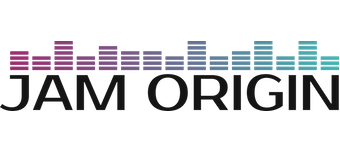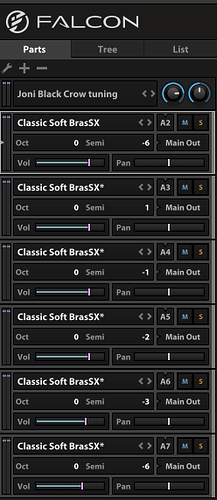Now everything depends on if you are looking for a MIDI Guitar software that is retunable to altered tunings, or if you are looking for a software that can deal with your guitars being in altered tunings. Those are two very different things of course.
To begin with, let’s make this very important distinction between the retuning capabilities in MG3 and MGHex:
MG3 uses your incoming (single stream of audio from your guitar’s standard magnetic pickups for its MIDI conversion. It listens to, and analyses one source of audio: distilling and extracting from this everything you get in (standard) MG3 MIDI/MPE. Up to six (simultaneous) pitches polyphony with accompanying individual pitchbend, brightness, pressure and strike messages for each and every pitch registered. What is NOT extracted is information about which string these pitches are played on.
MGHEX use the six (6) audio streams from a hexaphonic/divided PU system (think of a hexaphonic pickup as having six microphones - one for each string), and can that way create unique MIDI/MPE messages for six dedicated MIDI channels. There is no specific message telling us what string is being used here either, but it is conveyed by the MIDI channel distribution. If we use the analysed AUDIO stream from the high E string going into the hexaphonic Pickup (high E microphone) to create MIDI that we send out on MIDI channel 2, and uniquely pair each string with a MIDI Channel, we get something like implicit information about “what strings we are using” sent to our instruments. But there isn’t any actual MIDI messages telling us this. We can only infer this from what channel is being used.
We know that the standard MG3 tracker send out information on multple MIDI channels 2-7 according to a principle where the first note is sent on Ch2, a second simultaneously ringing note (interval) is sent on Ch 3, and if a three note chord is played , channels 2,3 and 4 will be in use (and so on for any added notes) A full six string chord will use channels 2-7.
Why can’t we order them to implicitly convey this information about which string they are played on, now? Because there is no such information.
Now to the questions about retuning:
With MGHEX there is of course every possibility to retune whatever is sent out on the channels at a 1) Tracker level, 2) Chain level or 3) Instrument level because we have this strict one-to-one relation between string and channel.
I often retune my Kontakt or UVI Falcon sounds by loading six instances of an instrument and simply retune it on a per channel basis. Here is an example where I went for a very odd Joni Mitchell (Black Crow) tuning using some synth in Falcon:
So if you are not necessarily looking for the feeling you get from the strings with a particular altered tuning, many (six string) tunings are already avalible. But, of cousre, you have to set them up yourself, avaiting their inclusion in the MGHEX MIDI Machine tool box.
But seven string tunings then? Well, If we have a divided 7 string PU it wouldn’t be much of a problem in theory, I guess. Even though we know that tracking is notoriosly harder with the lower frequncy pitches, we are still talking about a monophonic tracker. So if it works for bass it should work for a seventh string as well. But it calls for a revamp of the existing MGHEX tracker to incorporate also these fringe examples, and I can’t see how that comes very high on the priority list right now.
It is way more likely that a seven stringed guitar is going to get access to MIDI/MPE via the standard MG3 tracker with support for extended range, and then you can tune your guitar to whatever you feel like (within reason).
Personally I like the idea of retuning the software though. I would want to play the same instrument but be able to call up the occasional alternate tuning to easier play some Holdsworth, Gambale or Joni stuff, and then go back to being my old boring self again in standard.

